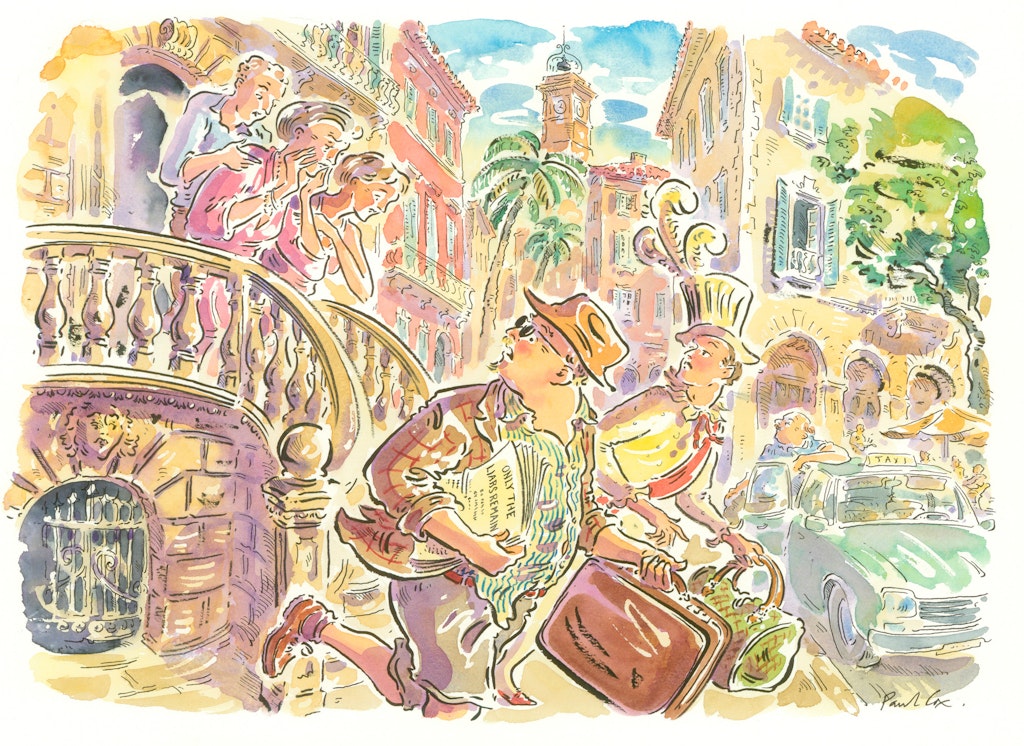A new madonna
On AI and authenticity
Earlier this year, the University of Bradford issued a statement announcing that the de Brécy Tondo, a painting bearing a close resemblance to Raphael’s celebrated Sistine Madonna, 1512-1513, in Dresden, was not, in fact, the work of an unknown hand but by Raphael himself. If this is indeed the case, the painting would be the most important addition to the Raphael oeuvre since the discovery in 1991 of the Madonna of the Pinks (La Madonna dei Garofani), now in the National Gallery in London.The Tondo was bought by the collector George Lester Winward in 1981 at a country house sale in Flintshire, North Wales, and given to the de Brécy Trust — which he founded — at his death in in 1997.
The painting had belonged to the Wynne-Eyton family, descendants of Sir Richard Wynn, Treasurer and Receiver General to Charles I’s queen, Henrietta Maria. Sir Richard is known to have extended a significant loan to Henrietta Maria: so, the painting may have entered his collection as surety or as settlement for the debt. Infra-red examination has revealed the Queen’s monogram on a reverse flap of the canvas.
The picture was long thought to be a copy after Raphael. But from 1981 it became the subject of intensive and prolonged investigation. Murdoch Lothian, the author of a PhD study of the Tondo, concluded: “it seems likely, on the evidence of the painting as artefact, that The Tondo and The Sistine Madonna were painted by the same person(s), and that The Tondo was the exemplar”.
Then, in 2004, laser Raman spectroscopic analysis of paint samples established that the painting predated c1700 and was consistent with works made in the Renaissance period. X-ray analysis meanwhile suggested the painting predates the Sistine Madonna.
Now the Tondo has been subjected to scrutiny by AI using a facial recognition system — known as a “deep neural network” — developed by Professor Hassan Ugail at Bradford University.
Ugail’s initial research was intended to help find long-term missing people and he has used tens of thousands of faces to devise an algorithm to compare facial features in numerous dimensions, including their proportions, textures, shading and colours. It was a version of this programme that he used on the Tondo.
There has been a degree of caution about exactly what AI can and cannot do and a reluctance to overrule the evidence of their own eyes
As a result of his research, he claims that “identical models were used for both paintings [the Tondo and the Sistine Madonna] and they are undoubtedly by the same artist”. In the terms of the study, “identical” means a similarity above 75 per cent. When the Madonnas in the Tondo and Sistine Madonna were compared, the similarity was found to be 97 per cent, while the two versions of the Christ child had an 86 per cent similarity. This then, say the report’s authors, is no later copy or variant of the Sistine Madonna but an autograph work almost certainly by Raphael that was, in fact, the model for the Dresden painting.
As with the Madonna of the Pinks more than 30 years ago, the announcement of a newly discovered Raphael was met with considerable scepticism by many art historians. There has been a degree of caution about exactly what AI can and cannot do and a reluctance to overrule the evidence of their own eyes.
With a work such as the Tondo, however, there is a stand-off. Traditional art historical tools are of limited use for a definitive attribution: there are no sketches for the work, no commission documents, no contemporary or early mentions, and no evidence of where the painting came from or how it entered the Wynn collection. Nor was Raphael known to make exact copies of designs for multiple works.
As Rudolf Hiller von Gaertringen of the University of Leipzig, co-author of a compendium of Raphael’s work, has noted, it is unlikely the artist would have reproduced his own figures in the 1510s, when, shortly after the completion of the Vatican Stanze, he was with Michelangelo in Rome.
Although he had a sizeable workshop that at one point numbered some 50 artists, many of the first rank, Raphael took pride in the variety of his figures.
AI cannot colour in these grey areas. It does not, for example, consider either the sixteenth- and seventeenth-century culture of copying or the historical context of a painting. Nor can it replicate the innate understanding built from years of studying a painter’s work at length and up close. The silence of many of the most significant Raphael scholars is hardly an endorsement of the Bradford attribution.
And now, Art Recognition, a Swiss company that collaborates with Tilburg University in the Netherlands, has used its own algorithm to examine the Tondo. Its results are opposite to Ugail’s and give an 85 per cent probability that the picture was not painted by Raphael. AI disagrees with AI.
Much as they may cheer, experts remain in an uncomfortable position. They can say, with a high degree of certainty, that the de Brécy Tondo is not by Raphael, but what they cannot do is to prove it definitively.
As things stand, traditional connoisseurship still holds the upper hand: the Tondo will never be accepted as a Raphael without their imprimatur. While AI can improve on many of our capabilities, what it cannot replicate is what Kenneth Clark called, in reference to Raphael, “the intelligence of the eye”. For now, at least.
This article is taken from the October 2023 issue of The Critic. To get the full magazine why not subscribe? Right now we’re offering five issues for just £10.
Enjoying The Critic online? It's even better in print
Try five issues of Britain’s most civilised magazine for £10
Subscribe














